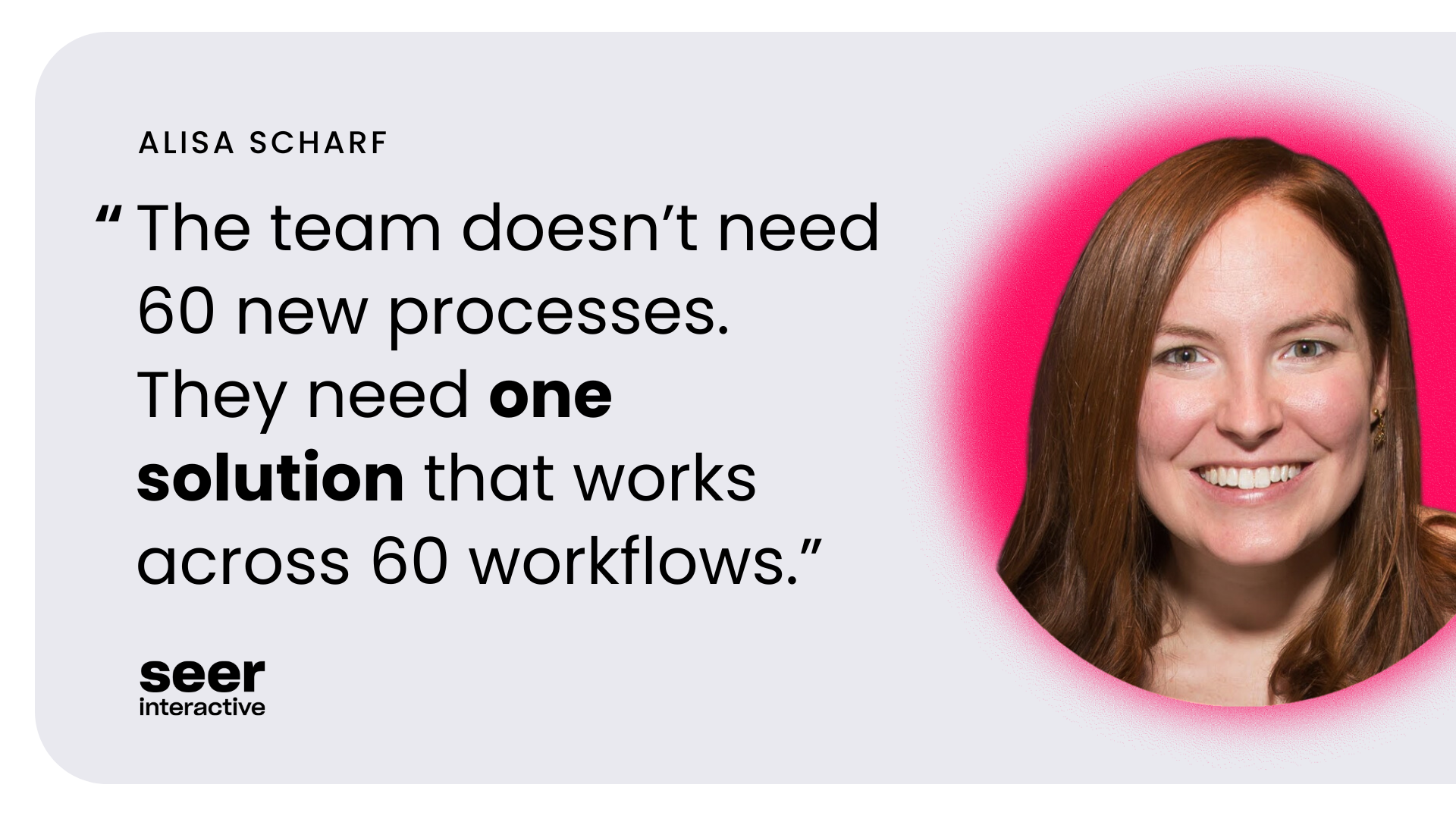Pixar is a renowned computer animation film studio that has captured hearts around the world ever since they released their first feature, Toy Story in 1995. How do they do it? Recently, Seer’s Creative Team went on a little field trip to investigate. Where, you may ask? The Franklin Institute, where The Science Behind Pixar exhibit was in full swing this summer. In addition to seeing some familiar, fun characters, we learned a lot about what goes into each film and each stage of the process—and we’re here to share some key takeaways that we can all apply to our work as designers and marketers.
- Take a Deep Dive Into Your Audience’s World
- Embrace the Intersection of Humanity and Technology
- Make Peace With This Fact: The Creative Process is Not Linear
- Use Details to Build Authenticity
- Be Able to Explain Your Work
- Above All Else, Love What You Do
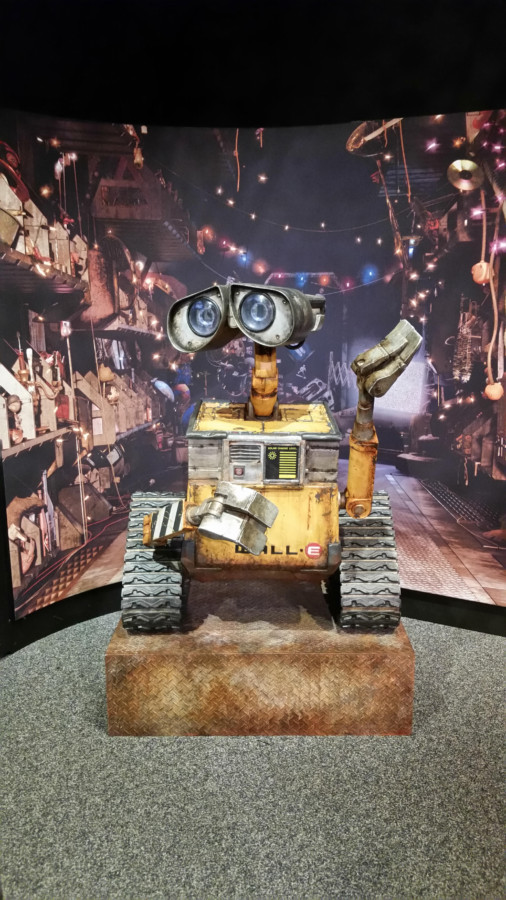
Photo from The Science Behind Pixar exhibit, courtesy of Brian Malinowski
Take a Deep Dive Into Your Audience’s World
One of the most striking themes throughout the exhibit was the amount of research and empathy that goes into each film. (No wonder Pixar is always making us cry!)
As the Pixar team takes on a new world, they start with researching in smart and innovative ways. For A Bug’s Life, they put a teeny-tiny camera on Lego wheels, so that they could take a look at the world from an insect’s perspective. When they reviewed the footage, they were amazed to see how different everything looked. They noticed that when light passes through leaves, at a bug’s perspective, it looks like stained glass. And something like a drop of dew on a leaf is incredible, because you can actually see up close how the friction of the leaf keeps this beautiful orb from falling.
For Finding Nemo, the team needed to understand how to replicate an underwater environment. Their diving research trips allowed them to uncover patterns in nature and therefore replicate elements that make you feel like you’re underwater, such as particles and rays of light. It was a huge challenge, but possible—given the ability to view the environment first-hand and do in-depth analysis
Key Takeaway: These examples and more all boil down to the same lesson: You can’t create a truly empathetic experience—one that will resonate deeply—without putting yourself in someone else’s shoes. As we design assets and market them, we can’t be afraid to talk to real people. We have to understand the perspectives of those interacting with our products, just as Pixar had to understand what it was like to look at the world from an insect’s perspective. As a designer or marketer, don’t hide from user interviews.
Test your concepts on real people—early and often. Whether you’re in-house or at an agency, tap the customer relations department to see how you can get access to the end-user. Then, don’t be afraid to pick up the phone. Have a real conversation to understand common challenges and pain points. If you’re working with a retail brand, go to one of the stores and experience it first-hand. For any brand you’re working with, use the contact form on their website and see what happens. Sign up for their newsletter. The sky is the limit!
Embrace the Intersection of Humanity and Technology
Along similar lines, we noticed the overarching theme of humanity and technology, working in harmony. For Pixar films, and for online marketing, you must embrace both.
One video at the exhibit focused on the man who sculpted Lotso from Toy Story 3. He used the character designers’ drawings as inspiration while sculpting the three-dimensional character out of clay. Once completed, this clay sculpture was scanned. This particularly scanner projects light and horizontal lines onto sculptures, sending data about the object’s shape into the computer, and ultimately creating a digital model.
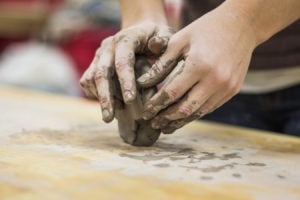
It’s amazing to see how these characters start off as hand drawings and make their way into three-dimensional, personally crafted sculptures before becoming digital beings. And even after a character becomes a digital model, it still requires the thinking and attention of a human to make it come to life and to carry it every step of the way, using artistry, math, and lots of code in tandem.
Key Takeaway: Leverage aspects of humanity and technology in tandem. Cross-reference your keyword research with user interviews to better understand what people actually want. For instance, is your content so long that most people will feel intimated to read through it? Would they prefer a video to a long-form guide? When you’re doing digital outreach, don’t forget that there’s a real person on the other end of the line. Print out a picture from LinkedIn of the person you’re calling, so that you can remember that they are a human. It makes a big difference in making you feel comfortable (shoutout to Lexi Mills for sharing that trick with us at our last event).
Make Peace With This Fact: The Creative Process is Not Linear
Disclaimer: this is a terribly lit, blurry photo and it pains us as designers to include it. But hey, we took it really quickly and didn’t think of using it until we started writing this post. So be kind :)
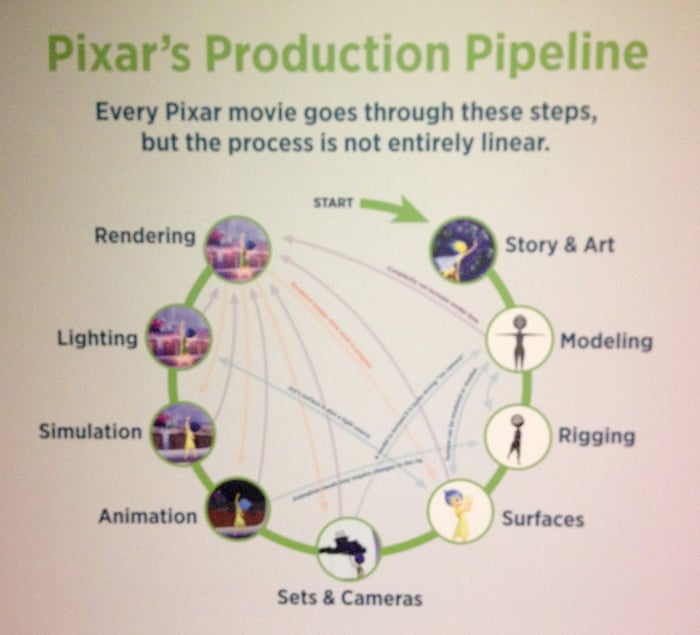
What you can (kind of) see here is that the Pixar production process has distinct stages for sure—but there is an understanding that there will be some back and forth—that it will not be linear. For example, once they start animating, they may realize they need to modify the character’s rigging. (Rigging is the process of adding controls to a digital model to allow animators to move it around and act. These controls ensure that when a character smiles, it’s not just his mouth that moves, but his cheeks will puff up, eyes will narrow, and so forth.)
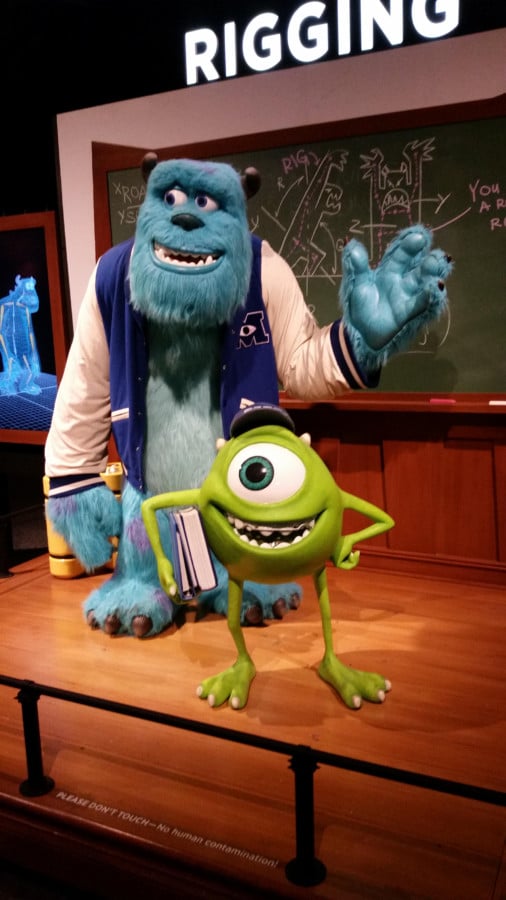
Photo from The Science Behind Pixar exhibit, courtesy of Brian Malinowski
This probably sounds familiar to many of our readers. How many times have you changed copy on a landing page after the design had already been approved? How about when you’re in development and a new technical requirement arises?
Key Takeaway: It would be wildly convenient to have a completely linear process, but it’s not realistic, so consider this: Identify stages in your process in which you commonly have to skip around or go back to a previous stage. If this happens a lot at certain milestones, just embrace it. Build it into your project plans. Prepare your team and clients for the likelihood of change, and it will feel a lot less like a failure and a lot more like healthy collaboration. It’s like that old saying: you can’t control the tide, but you can learn how to surf.
Use Details to Build Authenticity
Some of the major elements that make a film seem more life-like, realistic, and relatable can go unnoticed because it’s often the details that matter. There were a few great examples of details throughout the exhibit that the Pixar team needed to perfect in order to get a scene or character just right.
For instance, Merida’s hair in Brave was quite the task for the Pixar team. Her long, red, curly hair needed to move and bounce accordingly to her other movements. In order to get this just right, the team studied curly hair. They found that it most resembled a spring, and programmed her hair accordingly. But it still didn’t seem quite right. After many failed attempts, they realized that yes, the spring would work, but they would need to alter the structure of the spring slightly to really get it right. At the end of the day, all the extra work was worth it, in order to perfect the way her curly hair bounces when she walks, rides her horse, or saves the day.

Another particularly thoughtful detail was the architecture in Ratatouille. Computers are really great for creating perfect, 90 degree angles and straight lines, but the Pixar team understood that in reality, no buildings are perfectly straight. To make Paris feel more authentic, they actually skewed all the lines of the buildings slightly.

Key Takeaway: When you’re conveying a story or speaking to a particular audience, details are everything. Pay attention to the nuances of your work. Your audience may not always be able to pinpoint every little thing that you did, but they will know that it felt authentic.
Be Able to Explain Your Work
From animators to software engineers, artists and sculptors to riggers, dozens of Pixar team members shared their experience and expertise in 2-minute videos that were clear, concise, and easy to digest. They provided tangible examples of how their roles enhance each film and at which step in the overall process they came onto the scene.
Many stages of the process involve complex concepts, math, physics, code, and more—and yet somehow, in those videos, team members were able to explain their role in a way that was somehow specific and tangible, but still high-level enough for laymen to understand.
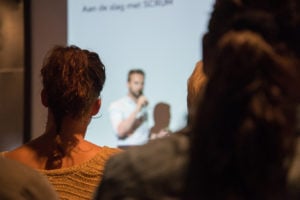
Key Takeaway: Learn to speak about your work. Help others understand your process and the importance of your role in a project, and you’ll generate more enthusiasm for the actual end product.
Above All Else, Love What You Do
The Science Behind Pixar exhibit showcased amazing work by a truly talented team, and we clearly got a lot out of it.
But we’ll sum up by saying that in addition to the lessons above, we learned that each person seemed to truly love their work, and to be very passionate about doing it well. Make a list of things you like doing and compare it to your daily work. Do they match up? If not, find a way to change that. Because when you love what you do, all the rest of these lessons will fall into place.

Photo From Seer’s Creative Team. From left: Kristin Bigness, Kirsten Malinowski, Christina Avino




